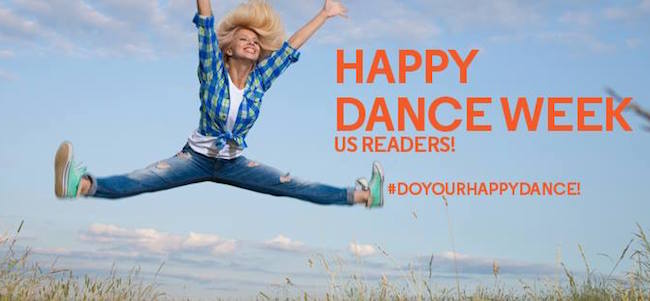6 Times When Dance Changed Lives
 In honor of U.S. National Dance Week, Dance Informa wanted to share some of our favorite instances when dance changed the lives of its participants. These stories move us and inspire us to celebrate dance, an art form capable of encouraging people and taking its partakers to new heights!
In honor of U.S. National Dance Week, Dance Informa wanted to share some of our favorite instances when dance changed the lives of its participants. These stories move us and inspire us to celebrate dance, an art form capable of encouraging people and taking its partakers to new heights!
#1. When 11-year-old Pierson Feeney was able to come off his ADHD medicine because dance helped him focus. His mom, Marsha Feeney, said that before dance his ADHD was disrupting their whole family. She shared, “We, at the time, could not go to dinner. We could not go to birthday parties. We pretty much stayed home.” However, after starting to take dance class, and now having done so for more than two years, she said he’s “a different child.” Read more in this article by the Sun Herald. Watch the accompanying video below.
#2. When dancing helped Jessica Dwyer cope with her Multiple Sclerosis. Only 27 when diagnosed, Dwyer came to find out that MS is an unpredictable disease of the central nervous system in which myelin sheaths around the brain and spinal cord are attacked. Learning that there was no cure caused her to fall into deep depression. Yet, one day she saw an ad for the Fred Astaire Dance Studio in Willoughby, where she lived. Since she’d always dreamed of being a dancer she decided to visit the studio for their Open House. Now she says, “Dancing keeps me strong and focused. I feel free when I dance.” Read more in this article by The News-Herald.
#3. When tango helped this stroke victim begin to walk again. Tho Nguyen, 31, told The Seattle Times that when he was 11 years old he had a massive stroke and the doctor told him he had a one percent chance of surviving. Well, survive he did and now he’s beginning to walk again thanks to Gabriela Condrea and her tango dance lessons. When he first began attending, Nguyen could only take two steps without his wheelchair or walker. But after continuing to come and being persistent, he can now walk more than 100. That’s 100 steps he can now take thanks to tango! Watch the touching video below.
#4. When dance provided an outlet for a war veteran after combat. Angelica Jimenez served with the United States Marines Corps, signing up only two years after 9/11. When she was in Iraq in June 2005, her team was ambushed by a terrorist group and she suffered third degree burns and shrapnel wounds. After a year of treatment and surgeries, she was battling emotional scarring and depression. That’s when she discovered Zumba. She shared with ZLife, “Dancing was the only thing that could keep my mind and body occupied. After discovering the Zumba program, I was instantly inspired. The sound of the music, the beats, the rhythm, the choreography, and the movement, was soothing and healing. It ignited the flame inside of me and made me feel whole again. Dancing made my worries disappear and my fervor for life reappear.” Now she’s a teacher aiming to help her students feel that same joy and zeal.
#5. When cultural dance helped rehabilitate victims of trafficking in India. According to a recent article by the Thomson Reuters Foundation, a six-month study of 50 female survivors in Kolkata and Mumbai has found that “dance movement therapy helped ease anxiety, depression, anger and post-traumatic stress when used alongside traditional counseling and other rehabilitation efforts.” The girls enjoy classical Indian dance forms such as kathak, which has fast footwork and can be a positive release of pent up anger, as well as bharatnatyam, which has elaborate hand and eye movements that can help express emotions. Read more in this article published in February. This use of dance therapy is in part thanks to the efforts of institutions such as the American Dance Therapy Association, which has significantly helped to increase recognition for the notion of dance as therapy over the years.
#6. When dance brought these special needs twins out of their shell. A few years ago, Dance Informa did an article on dance studios offering more inclusive dance classes. One of the studio owners interviewed was Caroline Atkinson, the founder and artistic director of the Ballet Academy of Arizona. Before the article, Atkinson was highlighted by a local news channel for her work with twins with special needs. In honor of the National Dance Week Foundation’s A Chance to Dance initiative, watch below!
If you have a story like this, we’d love to hear it. Simply email us at info@danceinforma.com.
